"In the history of Automotive brands there has been none with the length, breadth or depth of Porsche's influence. It's amazing to think that it's over a century ago that Ferdinand Porsche designed the world's first petrol-electric hybrid - as "
Electric 911
The perfect combination of retro class and future tech?
The sheep looked around suddenly and had every right to look baffled.
Sheep don’t generally expect to be stalked silently by a 1979 Porsche 911 Targa. Yet, here it was, the smooth, low-slung bonnet and iconic slightly oval headlight surrounds within pouncing distance of the bewildered sheep’s woolly jumper.
With an air of bemusement and hurt feelings – cars usually have the decency to announce their arrival with clattering engines and smelly, belching tail pipes – the sheep shuffled to the side of the road and the gleaming silvery shape of the 1979 Porsche 911 Targa glided past. With little more than the crunch of the gravel surface and a soothing, spaceship-like whine to mark its passing, the sports car sped off into the Welsh hills, gathering speed without sound.
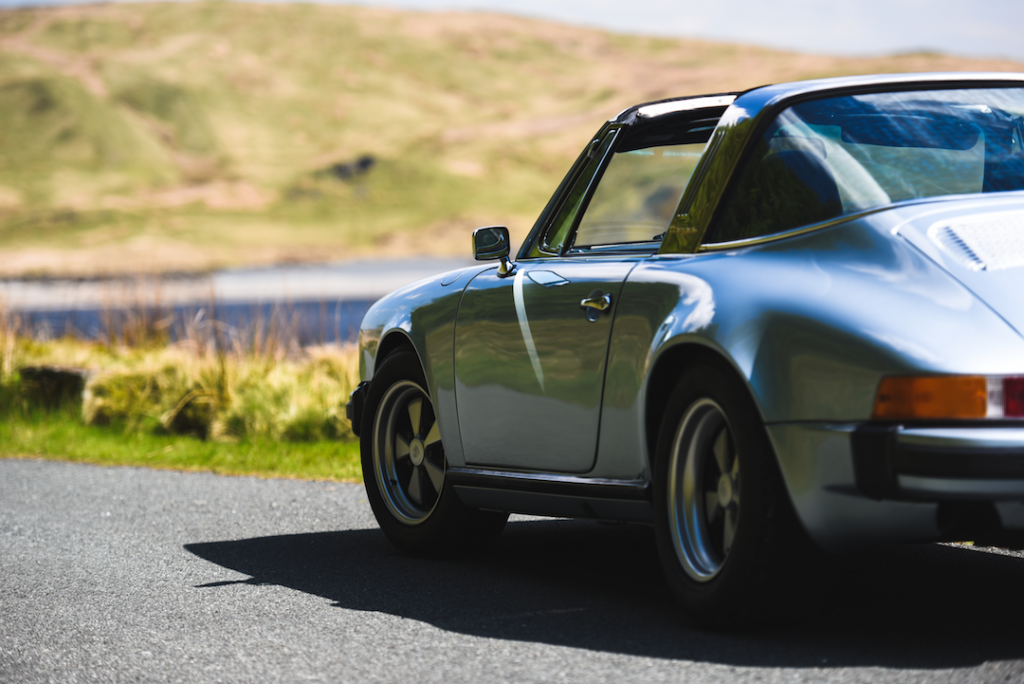
This part of Wales is well used to classic cars and sports cars of all shapes, sizes and ages. A convoy of early 20th century exotica had fumbled past just 20 minutes earlier, piloted by drivers who all looked roughly the same age as their cars but far more in need of full body-off restoration. The area is adjacent to where fire-breathing beasts compete at the annual British stage of the WRC series.
At first glance, Richard Morgan’s Porsche is simply another example of a beautifully restored 911 Targa, with flawless paint, gleaming brightwork and supple, unmarked interior surfaces.
At second glance, it has something of a Singer vibe about it: LED headlights, sidelights hidden behind clear lenses in the bumper and a mechanical set-up formatted by the former rally driver with the sole intention of putting a smile on the face of its driver every day. This car has a virtually perfect 50:50 weight distribution, meaning more predictable handling and far more front-end response than these cars ever offered originally, as well as oodles more torque all the way through the rev range.
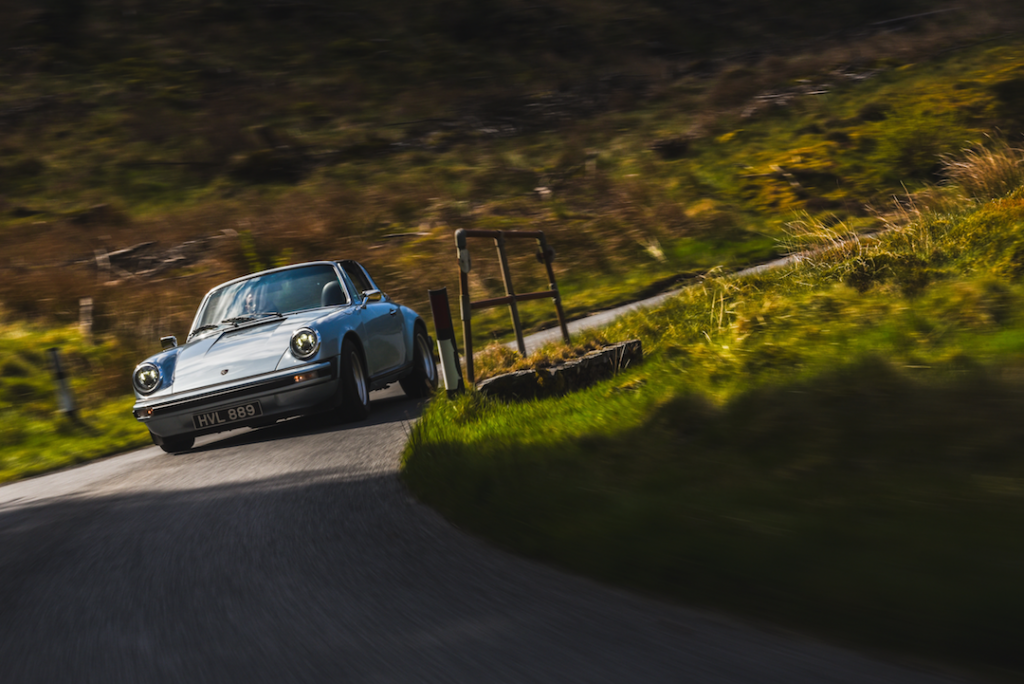
But this is no Singer. When Morgan pins his right foot to the floor to send the small-but-perfectly-formed 911 scampering away faster than a general election can be denied and then called, there is no familiar air-cooled rattle from the back of the car but merely that unearthly hum, as if someone has put Fuchs wheels on the Millenium Falcon.
This is no ordinary vintage machine. This 911 has been reborn as an electric car.
The creator
If you were to picture a typical classic car enthusiast, Richard Morgan of Electric Classic Cars wouldn’t spring to mind. He’s a former systems engineer with sharp sideburns and bright inquisitive eyes, who raced rally cars for a decade and who can’t resist doing donuts in a quiet gravel carpark nestled in the Welsh hills. He has a thousand stories of terrifying exploits on rally stages or messing about in terrible cars as a teenager.
- Electric 911
And now, Morgan converts classic cars to electric vehicles. His business is not even three years old, yet the 44-year-old (who looks 10 years younger than his age and who fizzes with teenage energy) has a full order book and is recruiting to scale up to meet demand.
“I was thinking about how to improve classic cars,” Morgan says in a soft Welsh accent. He speaks with the self-assured logic which often marks out engineers and entrepreneurs. “You want to improve reliability, usability, torque and power. Then I realised that the ultimate destination is electric.”
Morgan’s approach is novel. Rather than building an entire custom electric drivetrain platform, from motor to differential, he simply replaces the internal combustion engine with electric motors. The donor car gets a full restoration inside and out while he’s at it, down to the windscreen wiper motors. Leaving the car as near to original as possible solves all sorts of potential headaches with safety, crash tests and DVLA paperwork.
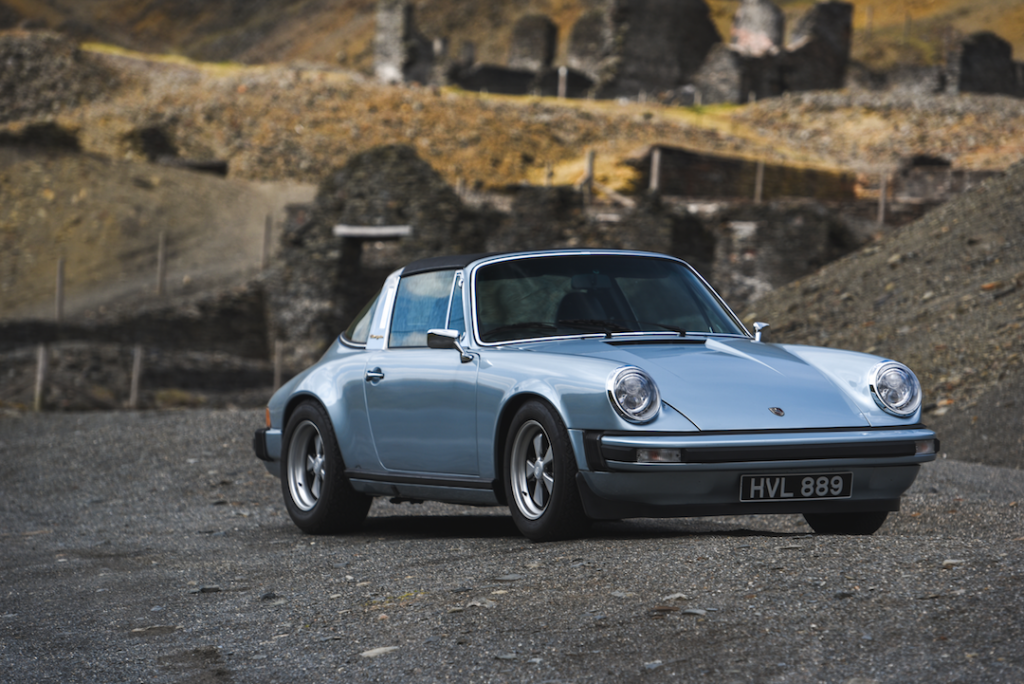
In the Porsche, two three-phase electric motors from HPEV rated to 100kW are mounted in a single aluminium outer casing and slung behind the car’s rear axle, where the engine used to be. Some clever engineering mates the electric motors to the original gearbox using the existing clutch – something of a surprise given that electric cars rarely need gearboxes, such is the torque on offer.
For Morgan, the action of changing gear is a critical part of the classic car experience and it does serve a functional purpose too. “The gearbox does help keep the motor in its optimum range and can cope with the additional torque,” he says. He traces two power curves in the air. “Whereas with an internal combustion engine, torque starts off low against revs, rises and then drops off towards the top end, an electric motor starts off with maximum torque at nearly zero revs but then drops off a little as the revs increase.”
In the Porsche, most day to day driving can be accomplished in third gear. Even in third, the way the little car takes off has to be experienced to be believed.
“Reverse is just a button which flips the direction the motor is running in – so you could drive at 80mph backwards if you really wanted,” Morgan explains mischievously.
The batteries are stored under the bonnet at the front of the car and beneath a bolted-down cover. The additional weight is what has balanced out the car’s distribution, making it a delight to drive. “The motors are still outside the rear axle, like the engine was, but having the batteries at the front gives the front tyres a lot more bite,” Morgan says.
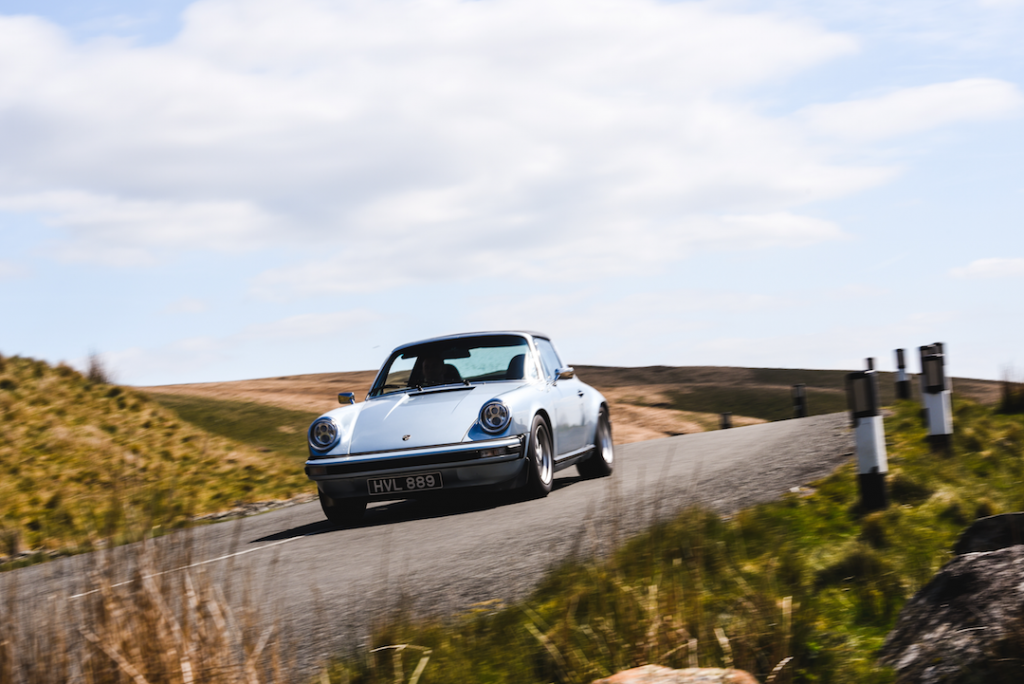
Climbing under the rear of the car is the only way to get a peek at the motors. It’s a strangely unsettling experience, like peering under Darth Vadar’s cloak and finding a pair of waxed bikini-model legs, or biting into an Easter egg and finding a small nuclear bomb. There’s the silver cylinder of the motor casing, the Curtis controllers and some bright orange cables – and not a lot else. It’s at once business-like, clinical and beautiful.
The powertrain can be programmed to deliver different characteristics under different conditions. Pleasingly, the Porsche doesn’t get all lab-coat complicated. Just two options are on offer: Eco and Power. These primarily alter the level of regenerative braking on offer, to extend the range of the batteries. Even in Sport, a day’s blast through the Welsh hills didn’t see the “fuel gauge” (an aftermarket electronic readout on the dashboard) dip below halfway.
When it comes to batteries, Morgan has a shortlist of three types that he turns to. Each has a different shape and the shape of the project car dictates which he will use. Two of the three are the same as those used by Tesla, in the Roadster and Model S models. If it’s good enough for Tesla…
The 911 boasts a total battery capacity of 54kWh, which is around double that of a Nissan Leaf. The batteries have a triple layer of safety built in, with fuses at cell, module and pack levels to avoid any possibility of problems. There are no complicated cooling systems either. “I’ve never had the slightest issue with battery temperature,” says Morgan. That might be more of a statement about the Welsh weather, of course.
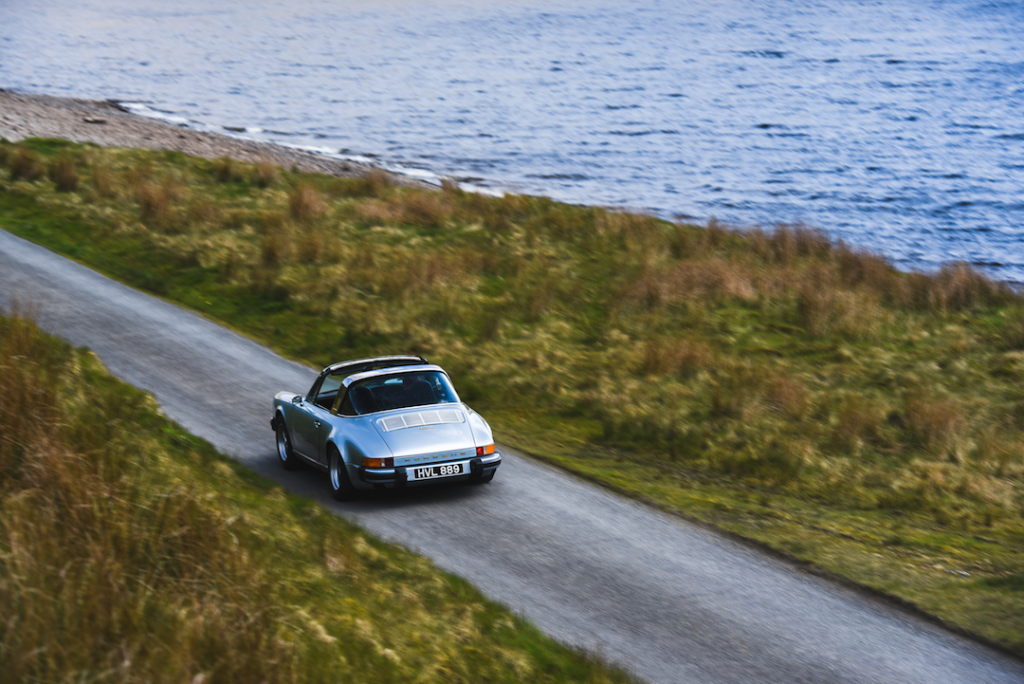
Despite installing enough batteries to give the Porsche a 200 mile range (“This does come down a bit if you’re driving…enthusiastically,” says Morgan), there is not a significant weight trade off in converting the car. “We took out around 300kg of engine, petrol tank, pumps, filters and so on,” says Morgan. “We put in around 350kg of motors, controllers, cables and batteries.”
That weight is distributed across the wheelbase, Morgan goes on, giving a more predictable, enjoyable driving experience. Off the line and in normal driving conditions, the additional torque introduced with the electric powertrain more than makes up for the additional weight: this Porsche does not hang around.
The customer
Richard Morgan’s order book spans an eclectic range of vehicles. He’s already completed two VW Beetles (one of which is his daily driver, complete with carbon wings and bumpers, bucket seats and a sub five-second zero-to-sixty sprint); next up are a mustard-yellow Range Rover, a black BMW CSL, an Aston Martin shrouded in secrecy, a Jaguar E-type and a pair of Fiat 500s. Who buys these niche creations?
“We’ve got three types of customers,” Morgan says. “There are the young professionals who live in the city, who want a small car to nip around in for short journeys.” These are the customers that all the major OEM manufacturers are targeting; EVs qualify for congestion charge and tax exemptions, and are cost-effective to recharge. Their short journeys mean plenty of time for recharging too and don’t trouble even the lower end of the mileage ranges on offer today.
“Then we have older clients,” Morgan goes on. “These people love the look and feel of classic vehicles but want a hassle-free version which will start when they want it to and won’t break down every weekend.” Electric vehicles are famously simple when it comes to mechanical parts, requiring virtually zero maintenance. Morgan uses brushless motors to maximise this feature.
“Our third type of customer is the EV convert, the person who already has a Tesla and a Leaf and who wants something else, something a bit more unusual,” says Morgan. “There’s a pretty small range on offer at the moment, such as the Model S, the Leaf, the i3 and the Zoe. The Model S is expensive and is marketed at the luxury end of the market. When it comes to something cheaper and fun, there isn’t really anything else available.”
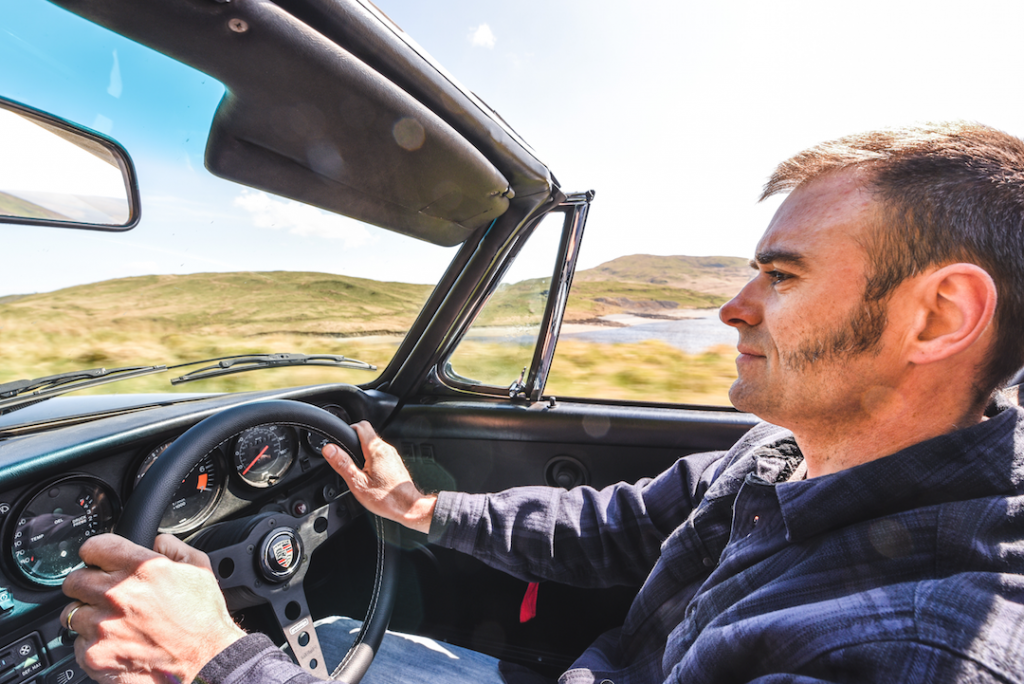
That is really Morgan’s focus. As a previous rally driver and a bit of a car nut, he wants the cars to be fun to drive and he’s not prepared to skimp on cost to deliver his vision. He takes a motorsport approach to getting each car set up. Nothing less than perfect will do, and he spends a lot of time test driving each vehicle to fine tune it before handing it on to the client. Just as much work goes into the brakes as into the motors. “It’s all very well making the car much faster than it was before but it needs to be able to stop too,” he laughs. Often, the original brakes are not up to the job, calling for modern replacements or parts taken from the period but elsewhere in the manufacturer’s model line-up.
This attention to detail and innovation does not come cheap but nor are prices unrealistically high. “A smaller car could cost around £18,000 to convert, while a more complex sports car might be nearer £40,000,” Morgan explains. The price tag is fluid, however, as clients often request full restoration in addition to the fabrication work (all of which is carried out using local partners who make their living primarily in the rallying world) and new drivetrain components.
The future
Is there a future for converting classic cars into electric vehicles? Morgan’s full order book certainly suggests there is. He’s in a very small club of businesses which offer this type of ground-up restoration, fabrication and fettling, the number of which worldwide can be counted on one hand.

Enquiries are flooding in from around the globe, demonstrating that the interest is there. In fact, although pricey, this movement towards converting vehicles to run on electric power could be the start of a new type of modified car culture, certainly until mainstream car makers figure out how to offer electric cars that excite car people, not merely environmentalists.
Battery lifespan has been one of the scary parts of EV ownership but that is not the case anymore. The expected life of the Tesla battery is tough to estimate, but it could be anywhere from 36,000 miles to 300,000 miles, depending on use and a host of other factors. It’s certainly not discouraging sales of the Model S, of course.
Morgan’s goal is quite clear: to continue to focus on quality and attention to detail. The 911 project took three months to complete. He is not interested in rushing out as many units as possible to bump up sales, nor is he interested in leaving the factory floor. In fact, the additional staff he is recruiting are to help mostly with areas of the business other than the build process, such as sales and marketing. “I want to stay hands on,” he says. “This is what I love: getting my hands dirty, working on the cars.”
And then he leans on the accelerator and the 911 glitters off into the distance at warp speed, leaving behind nothing more than that magical whirr in the Welsh sunshine.
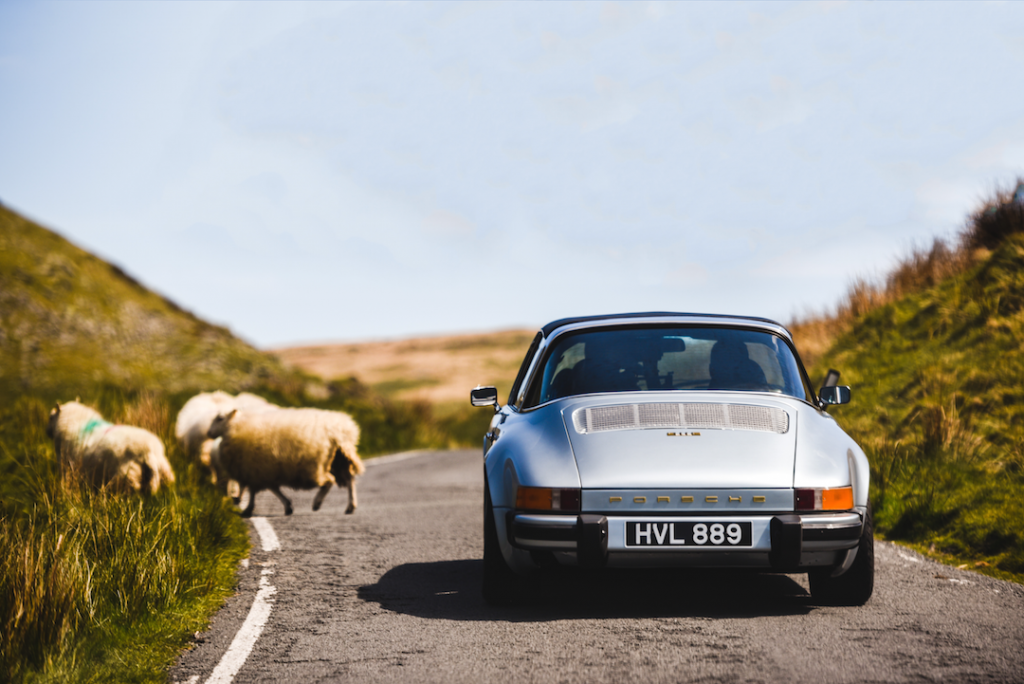
photos: Dan Bathie / Spacesuit Media
CLICK TO ENLARGE
























